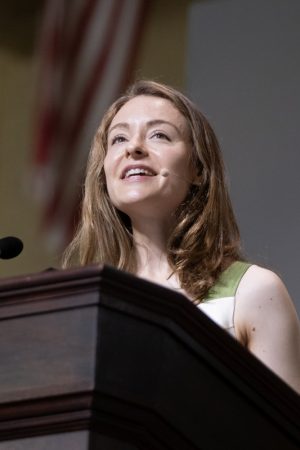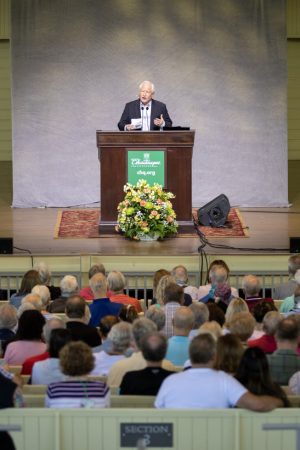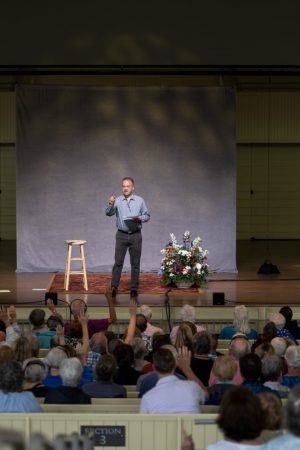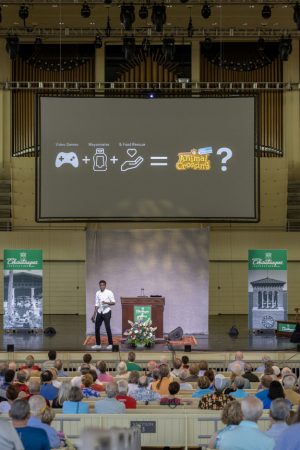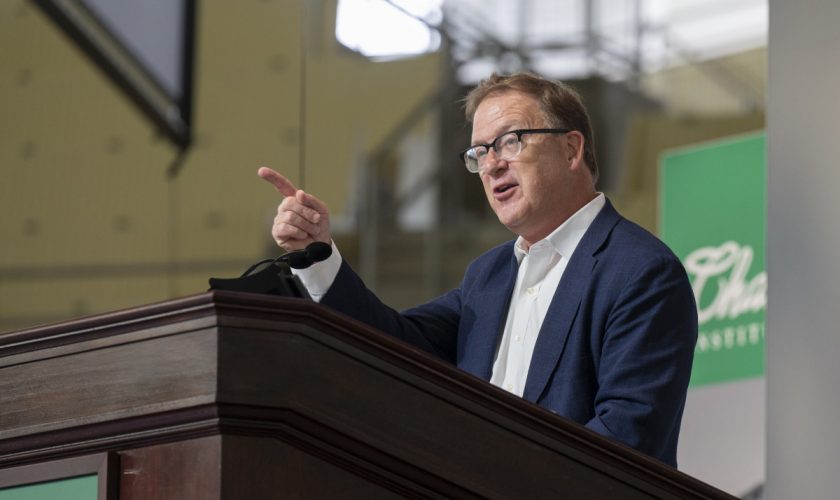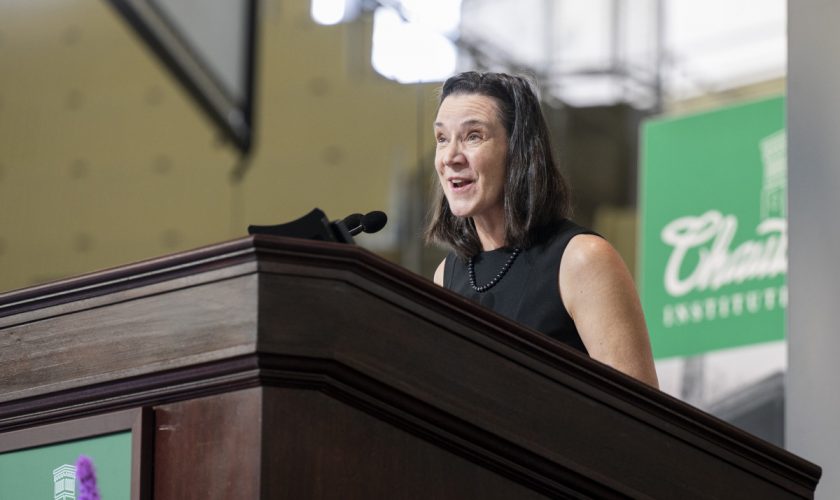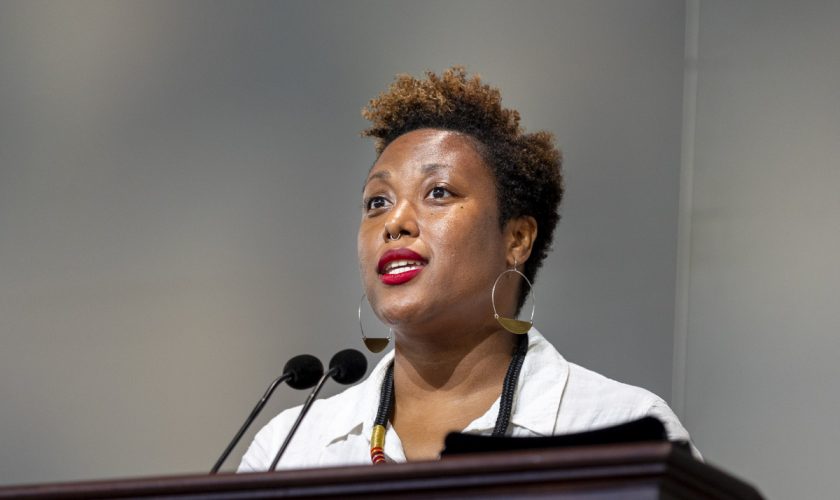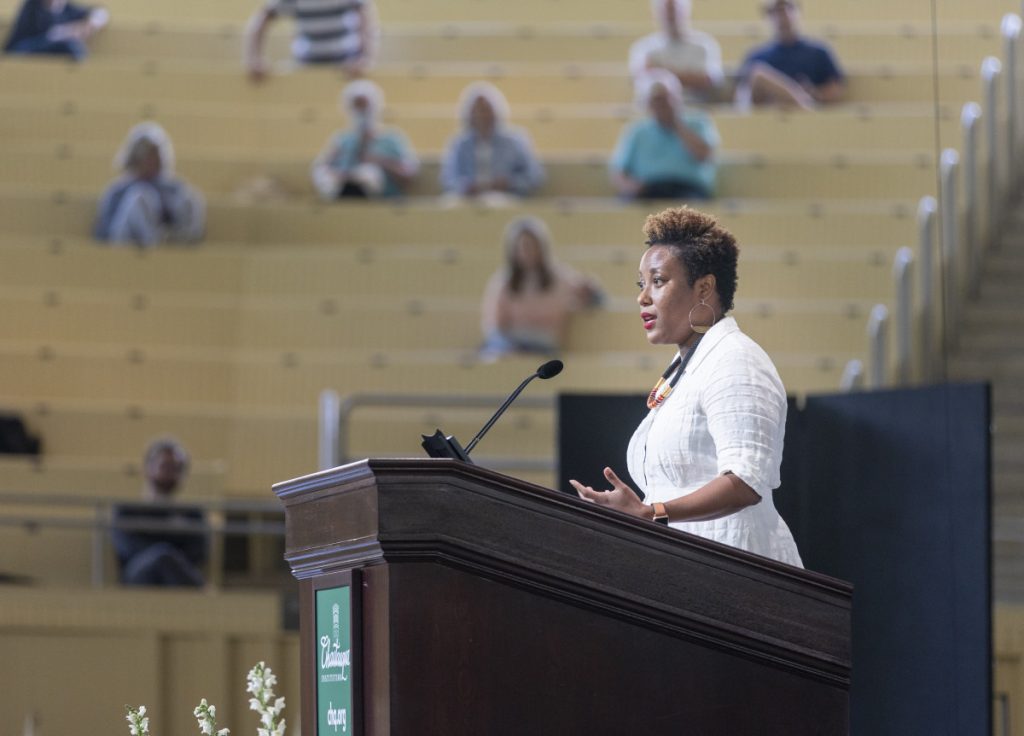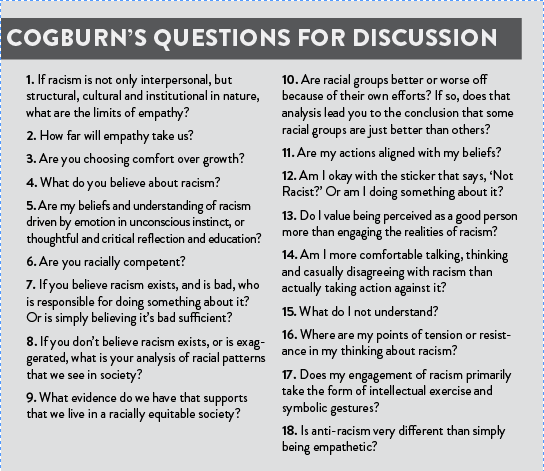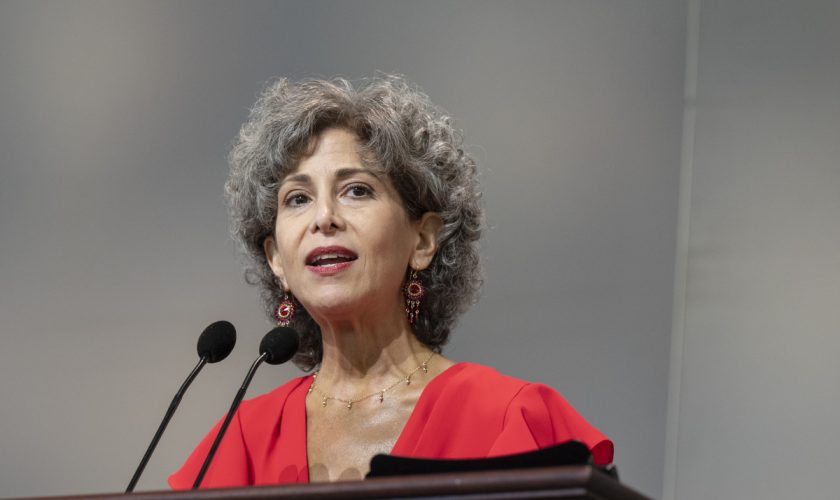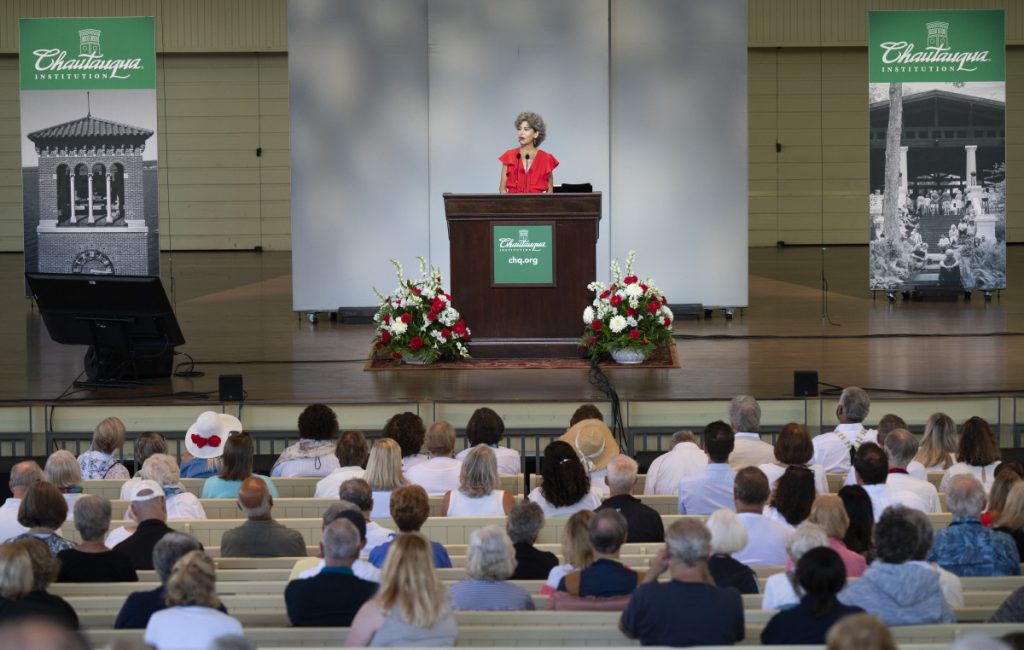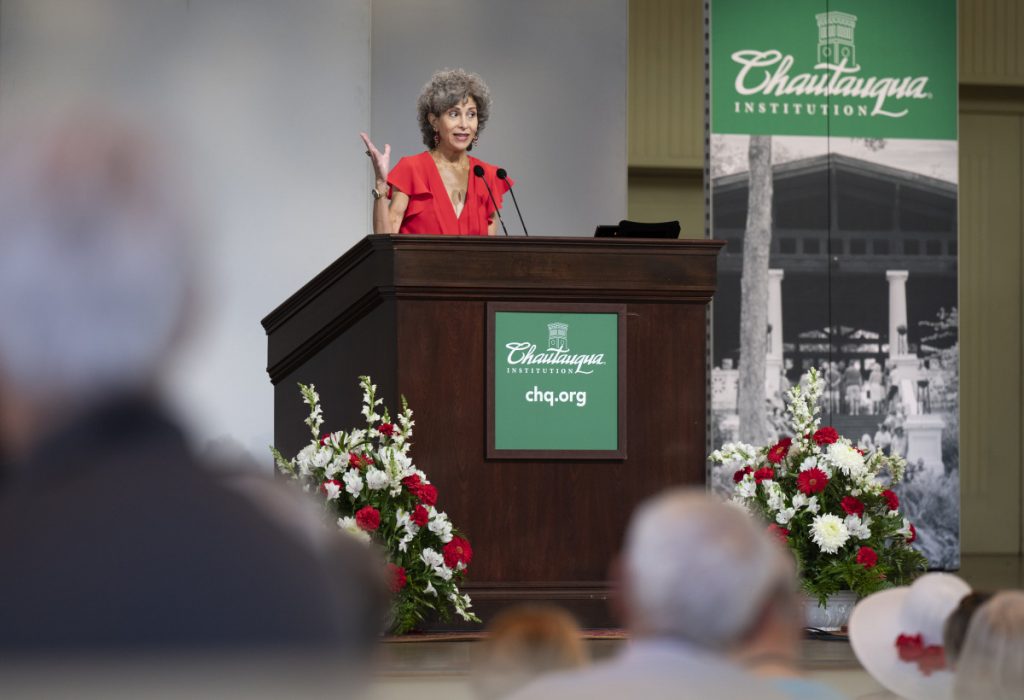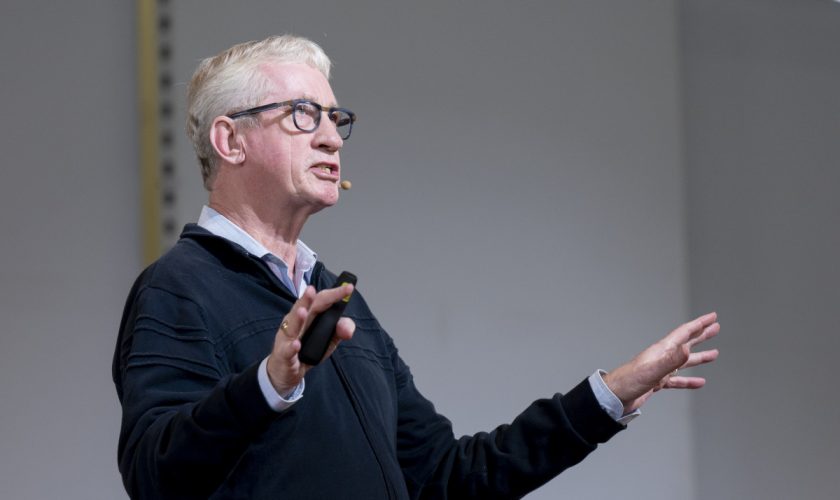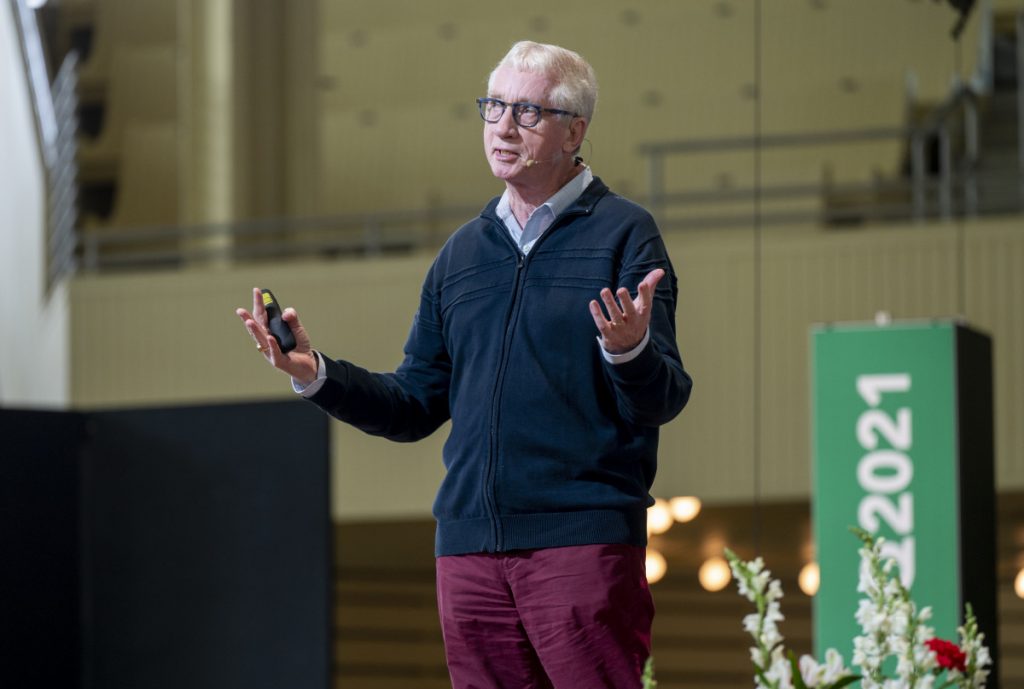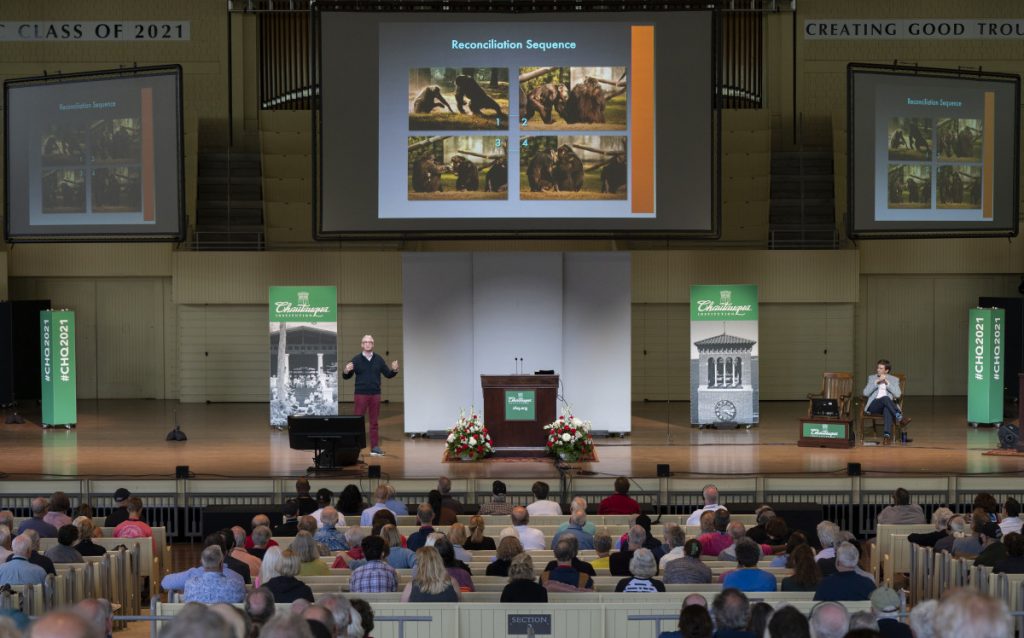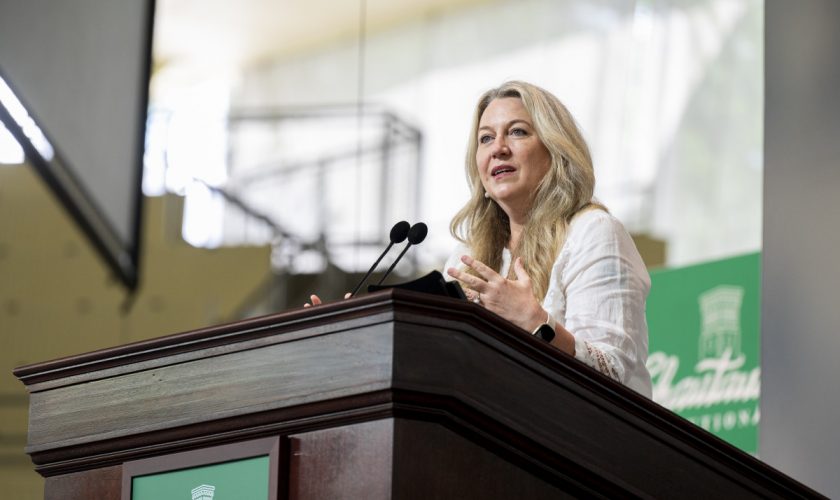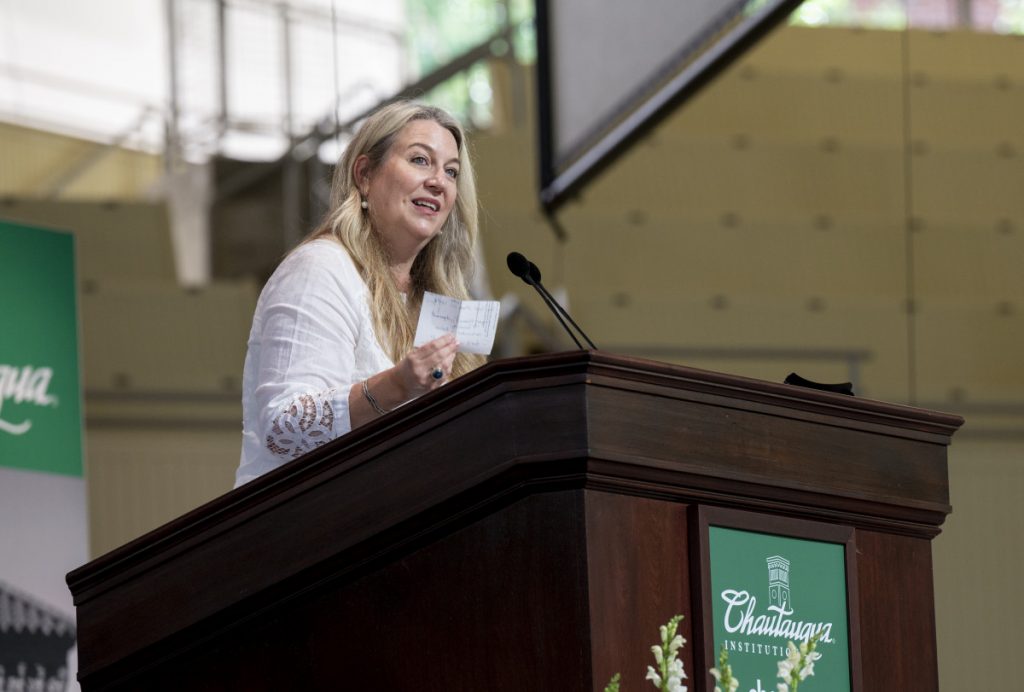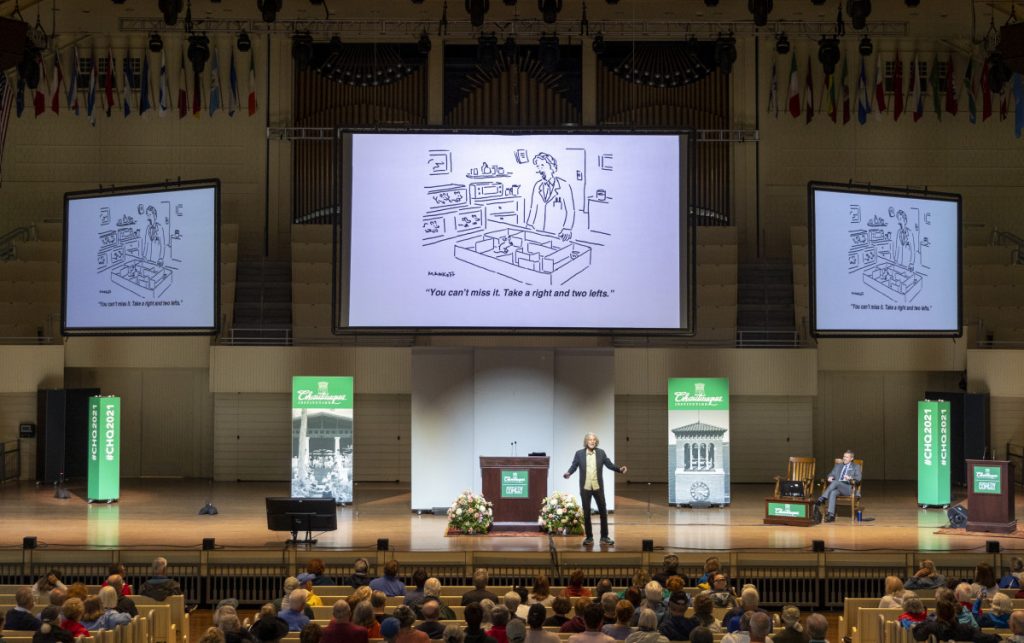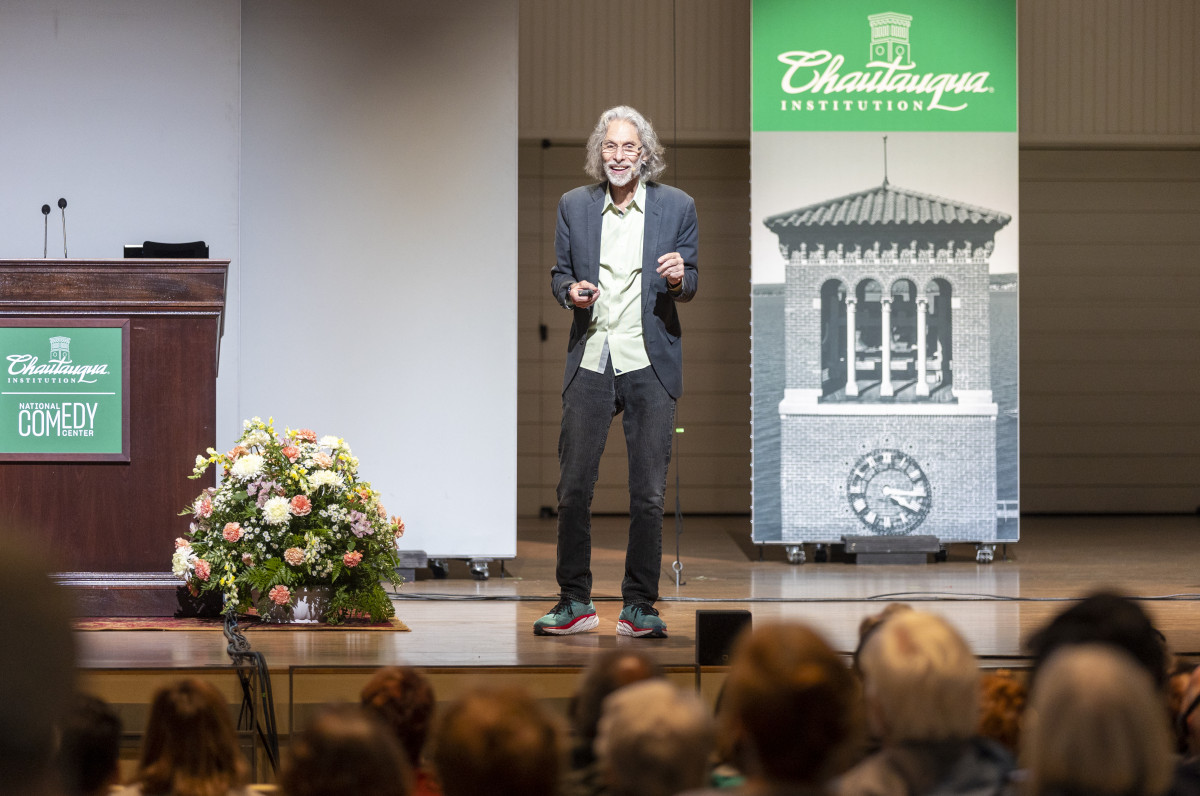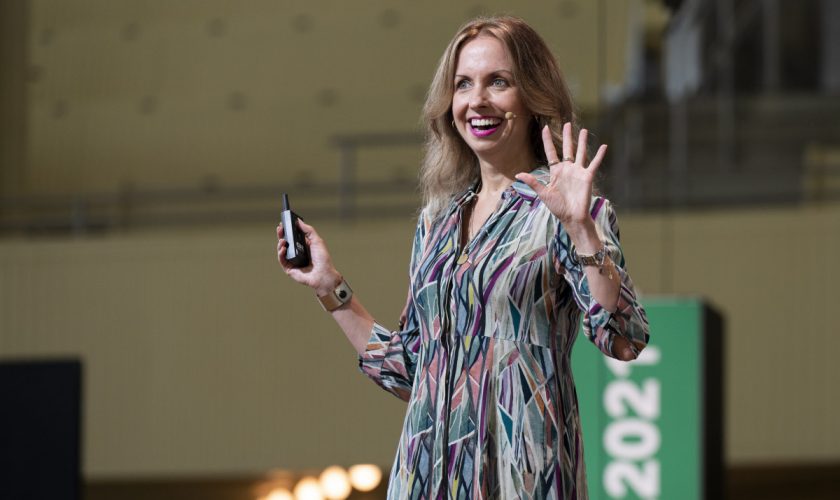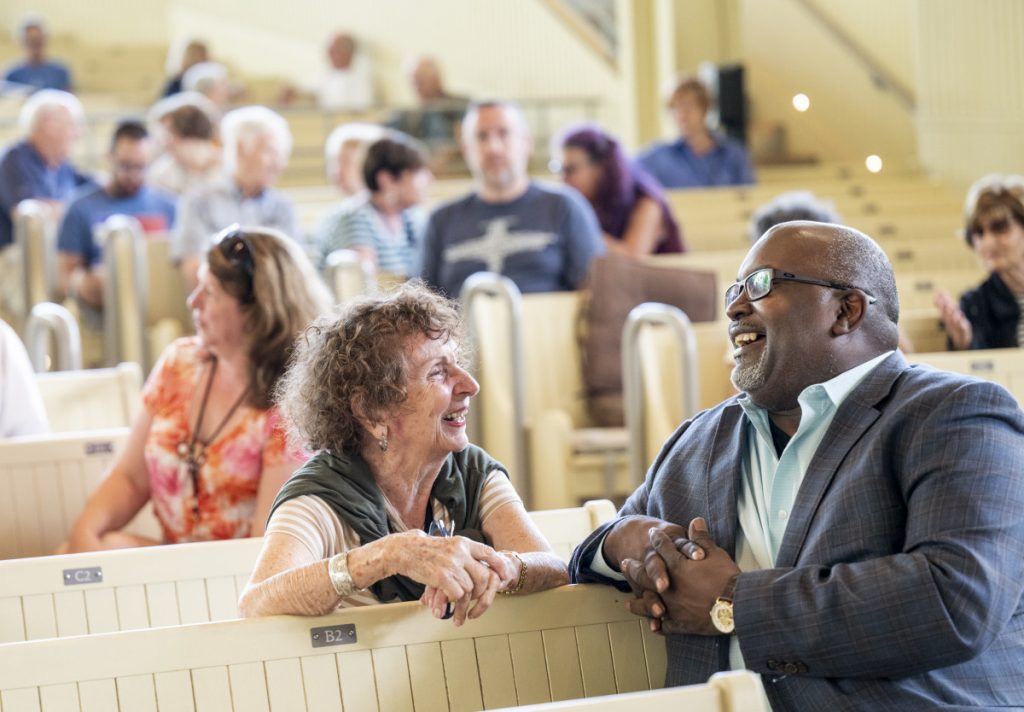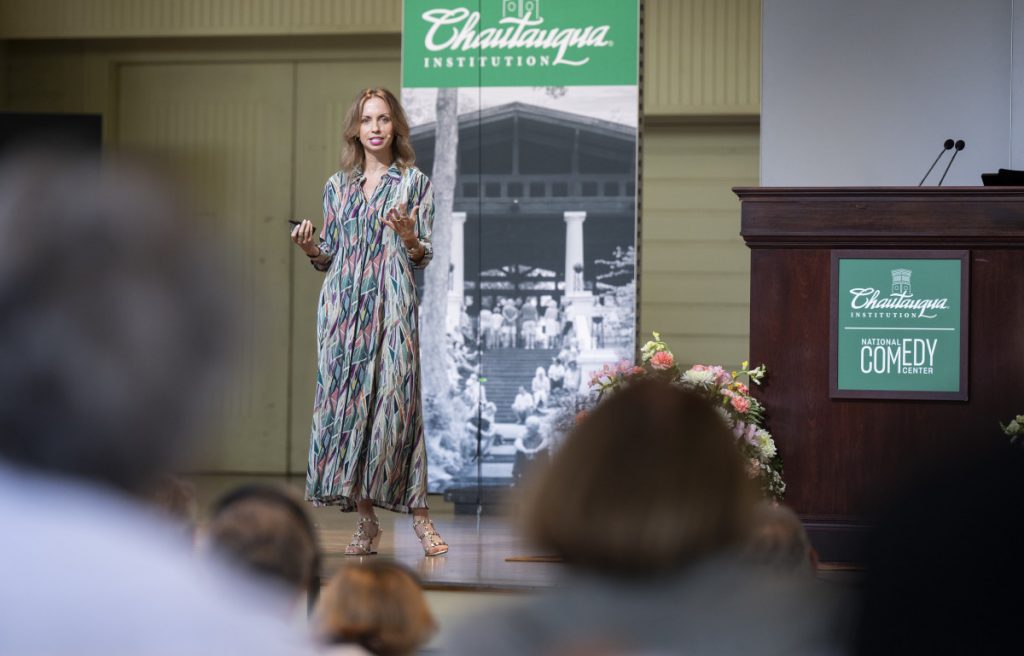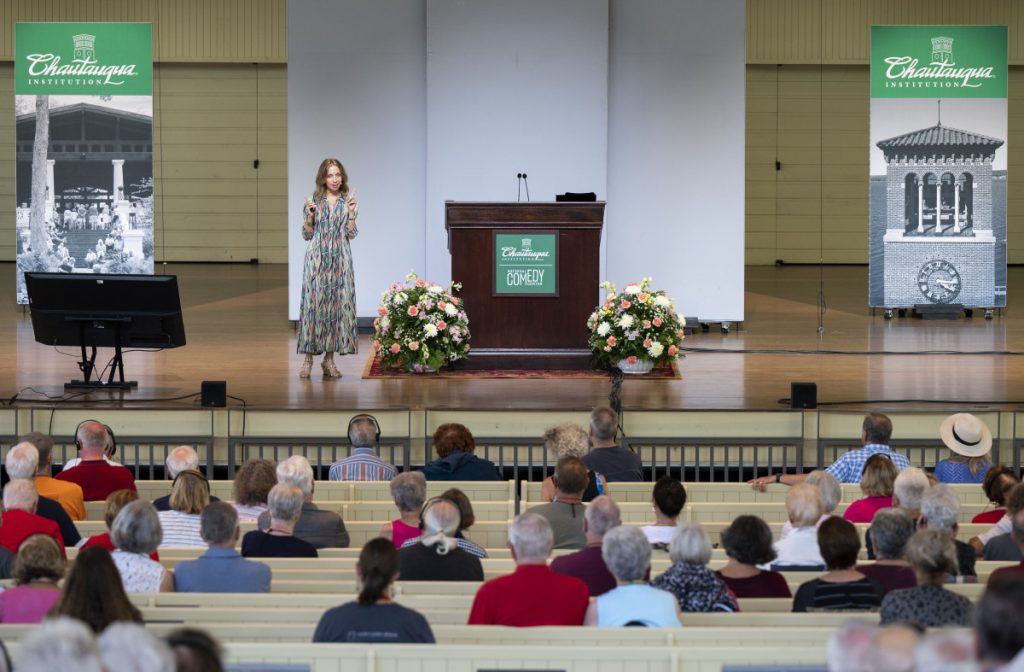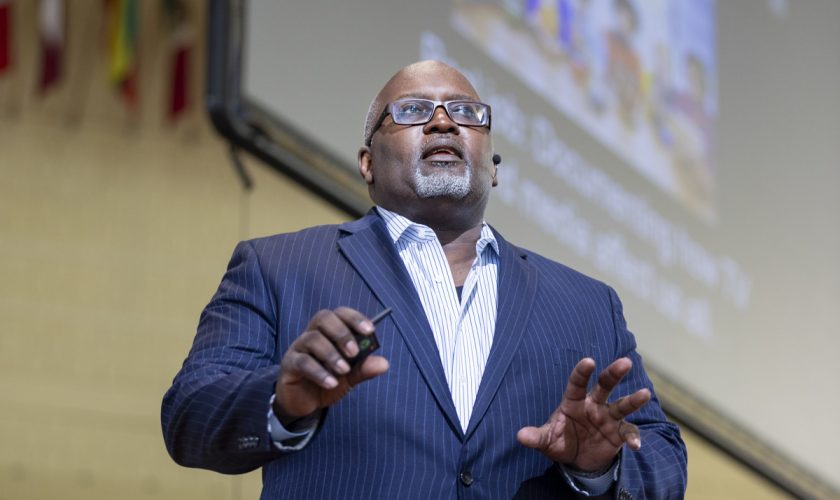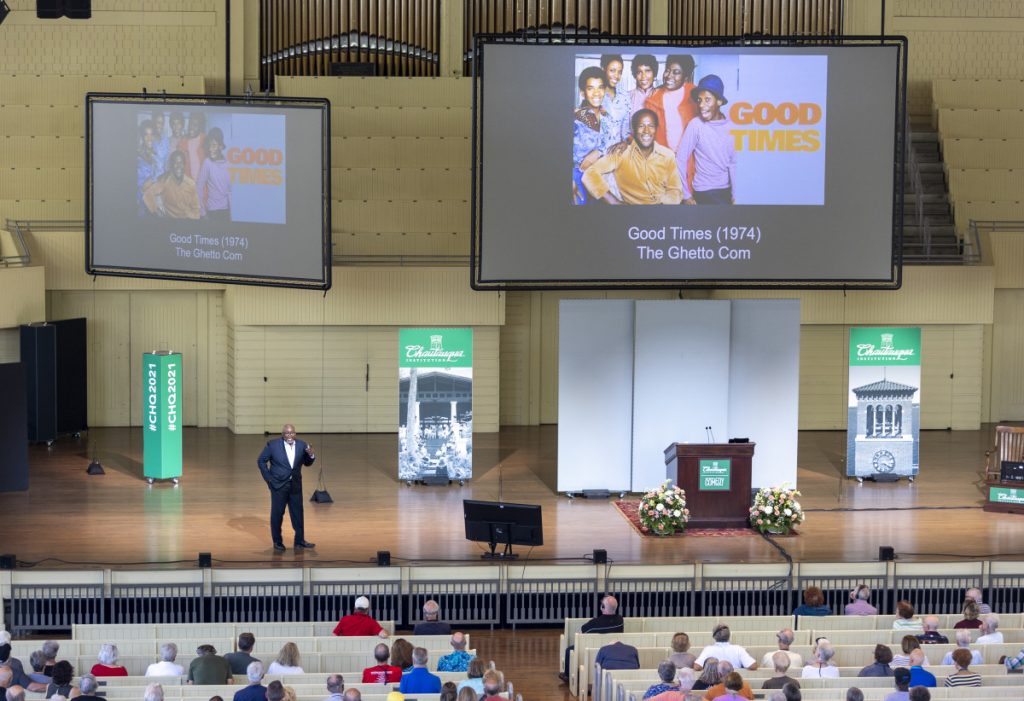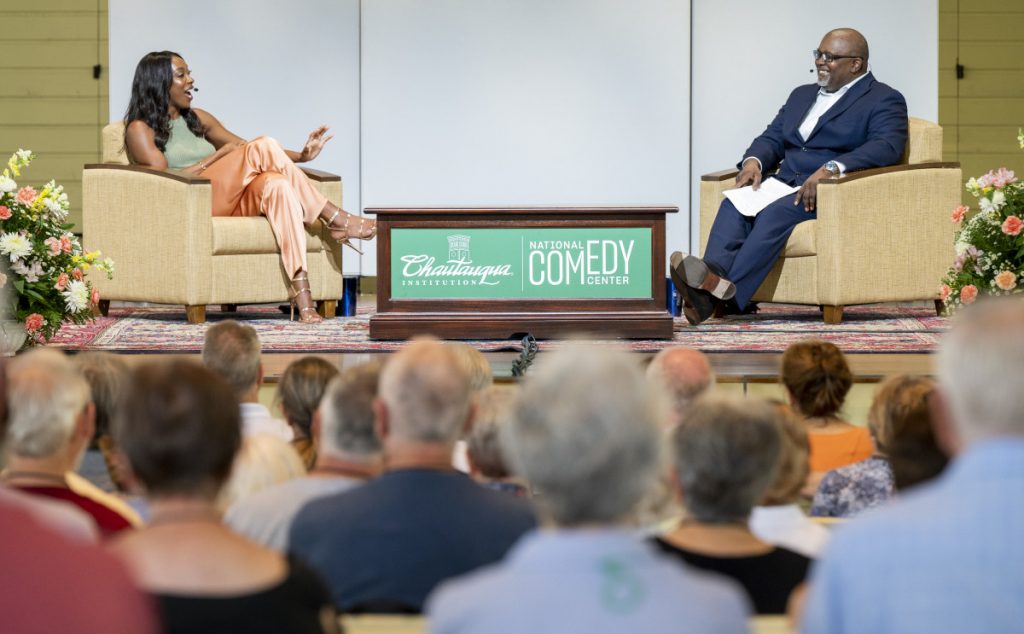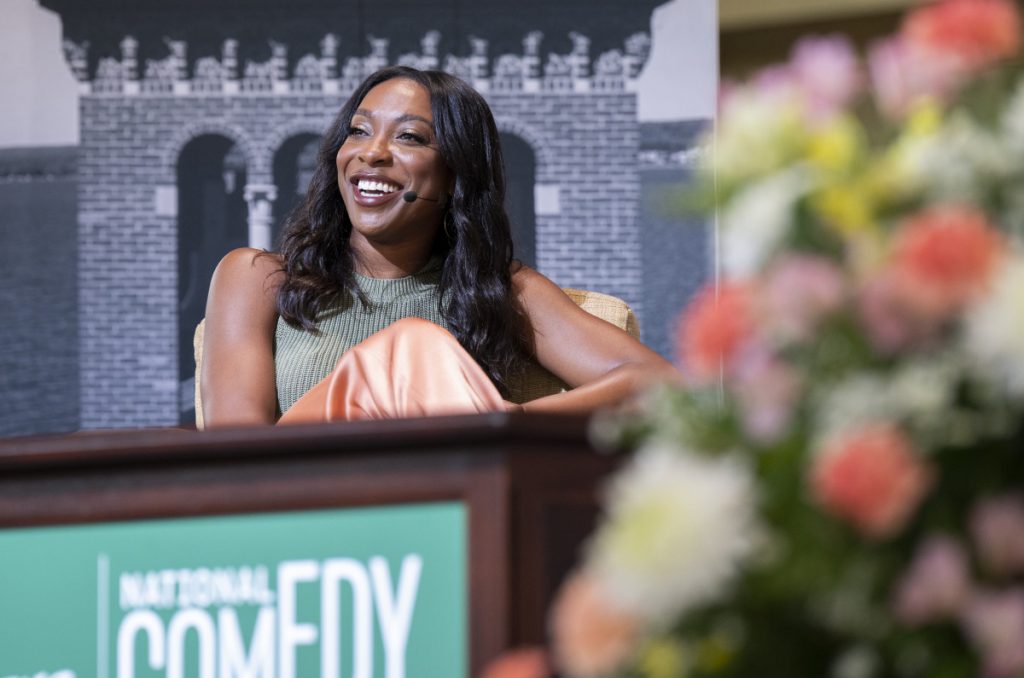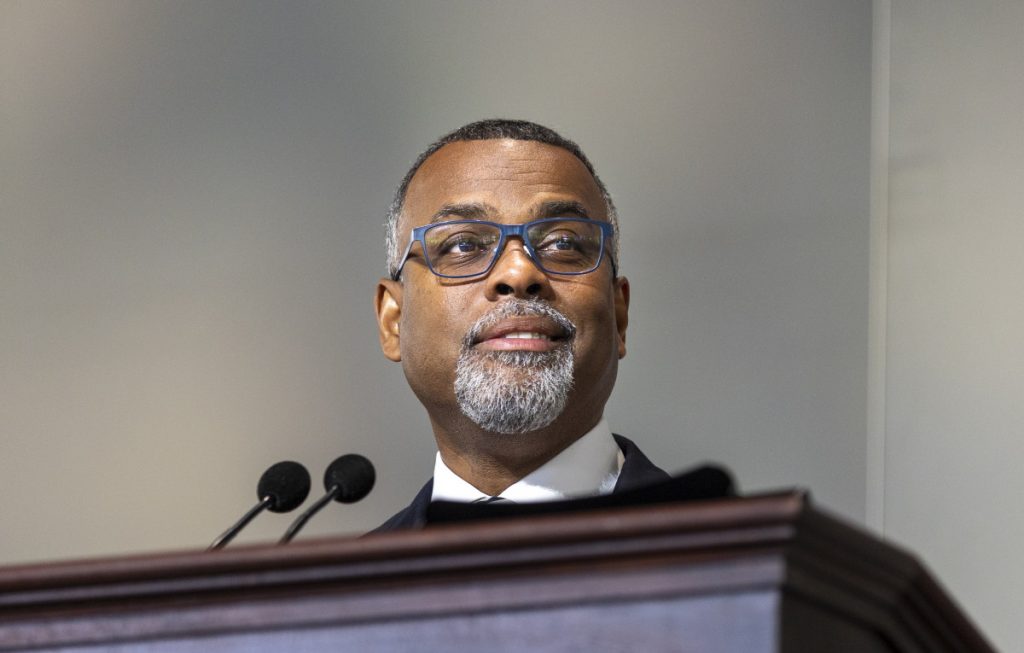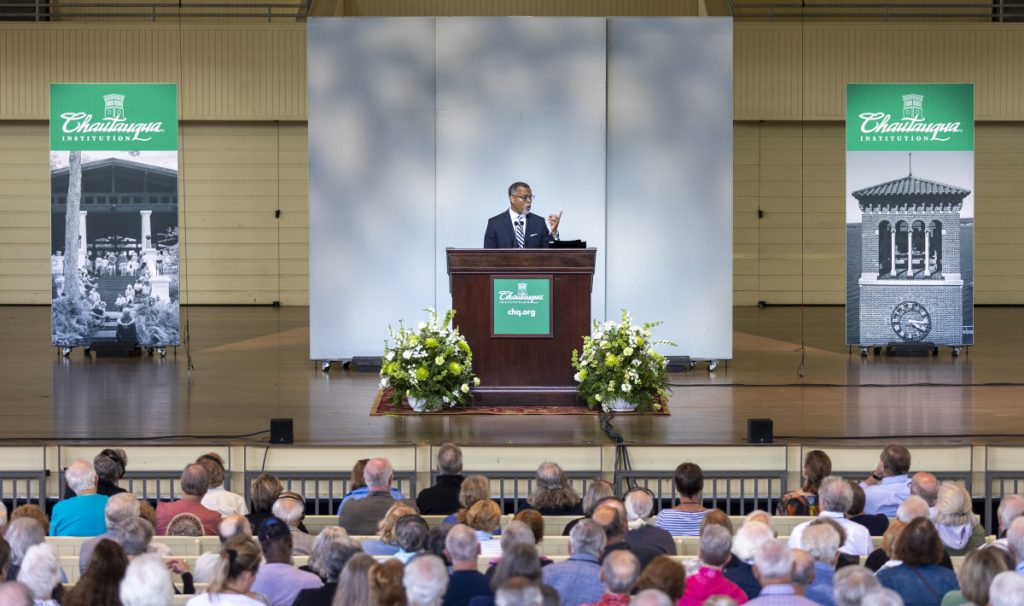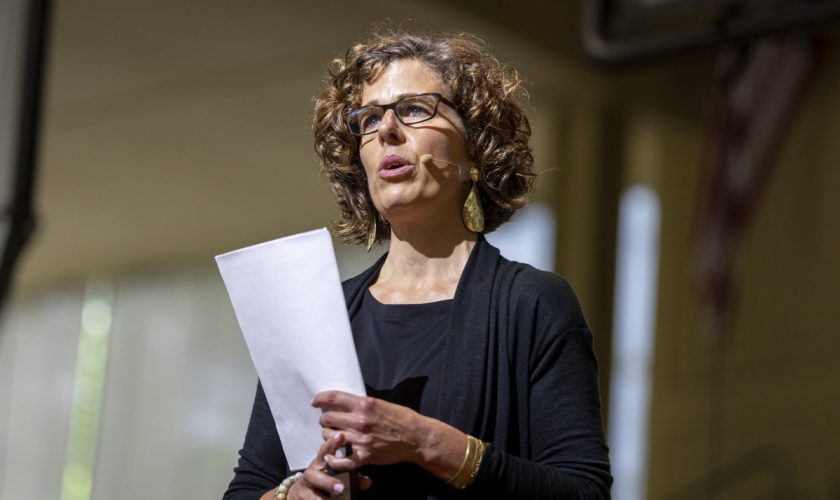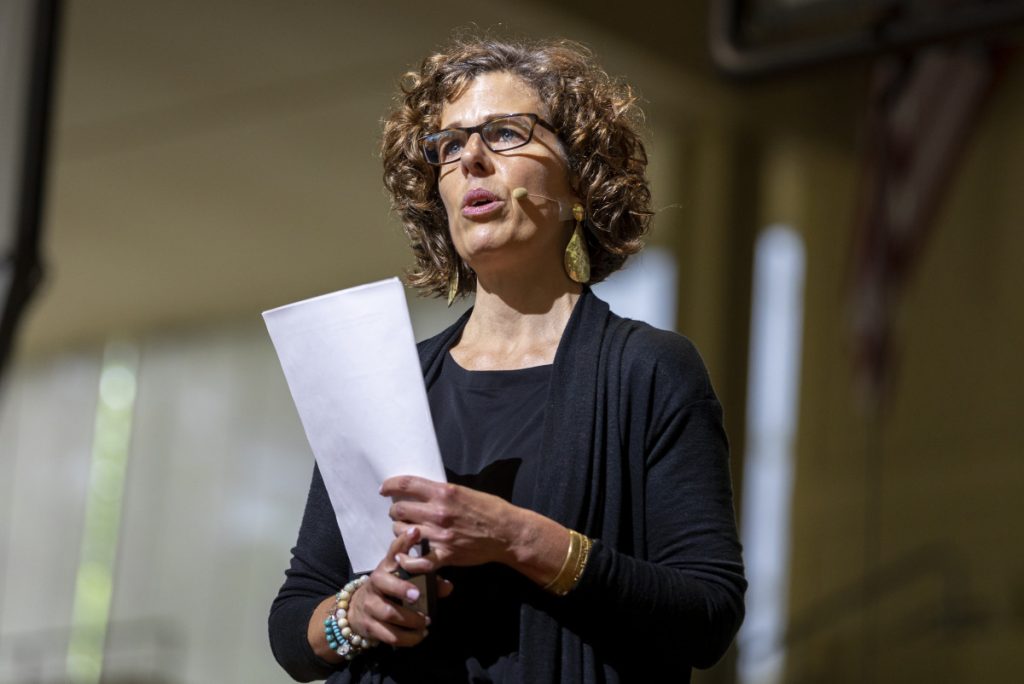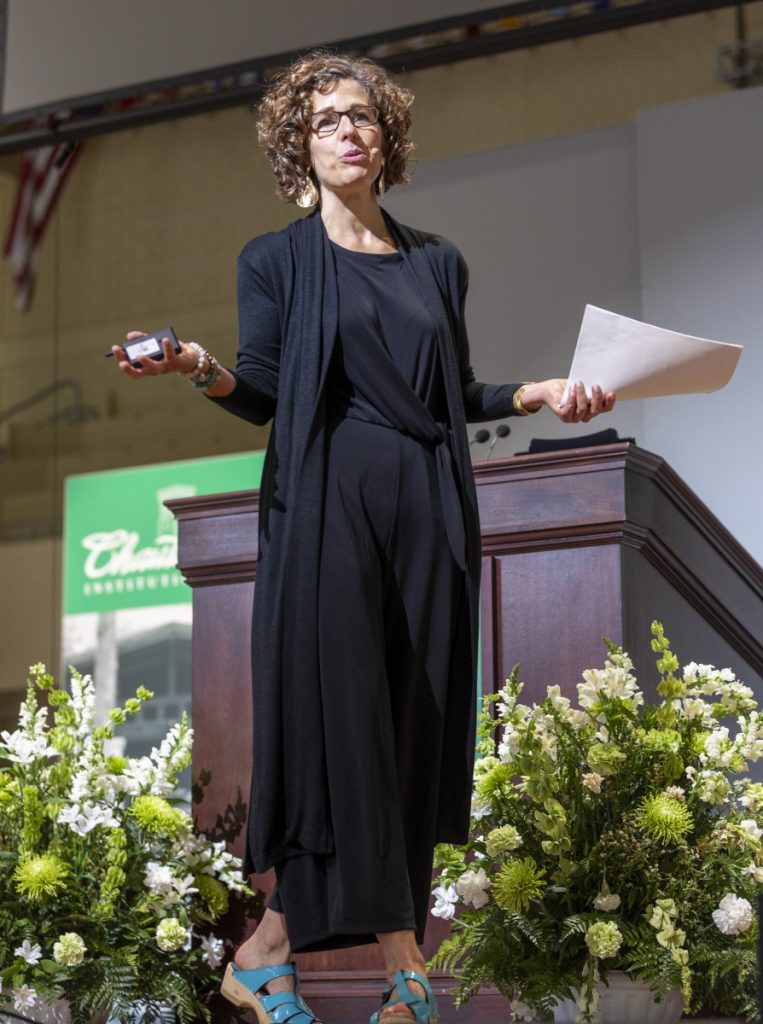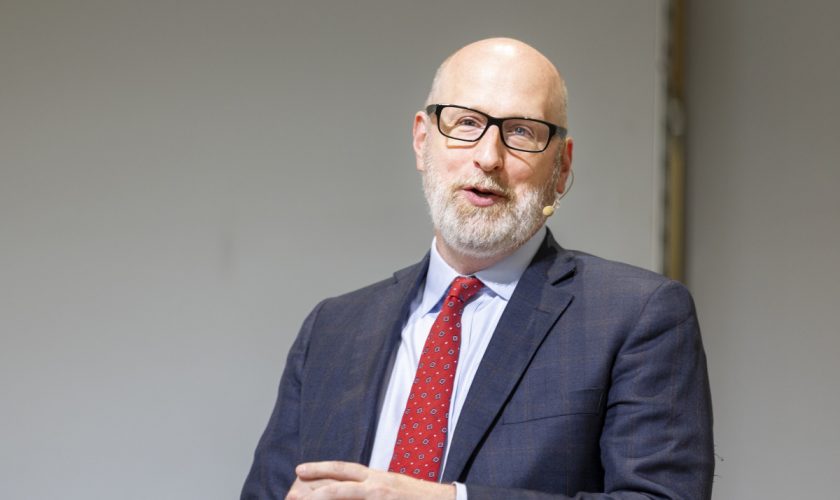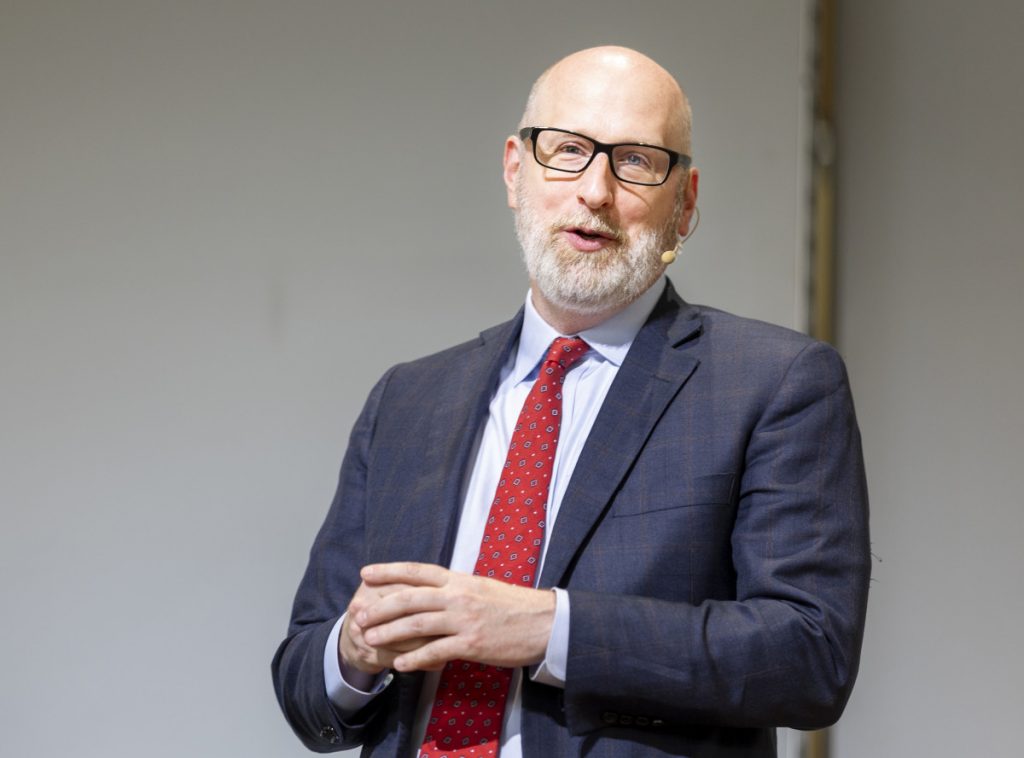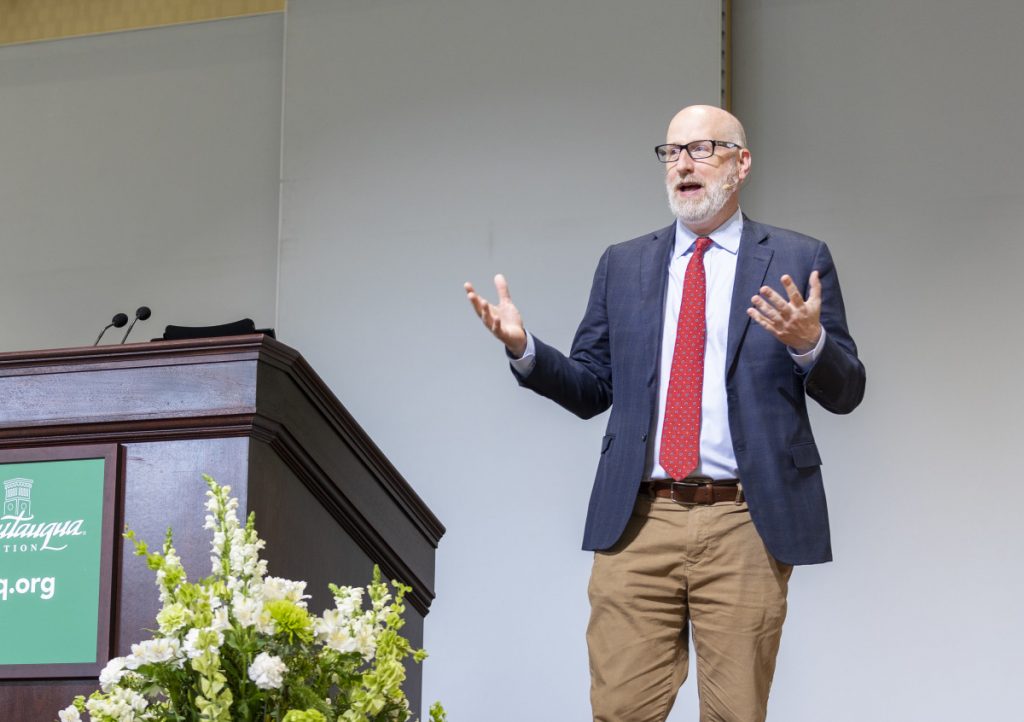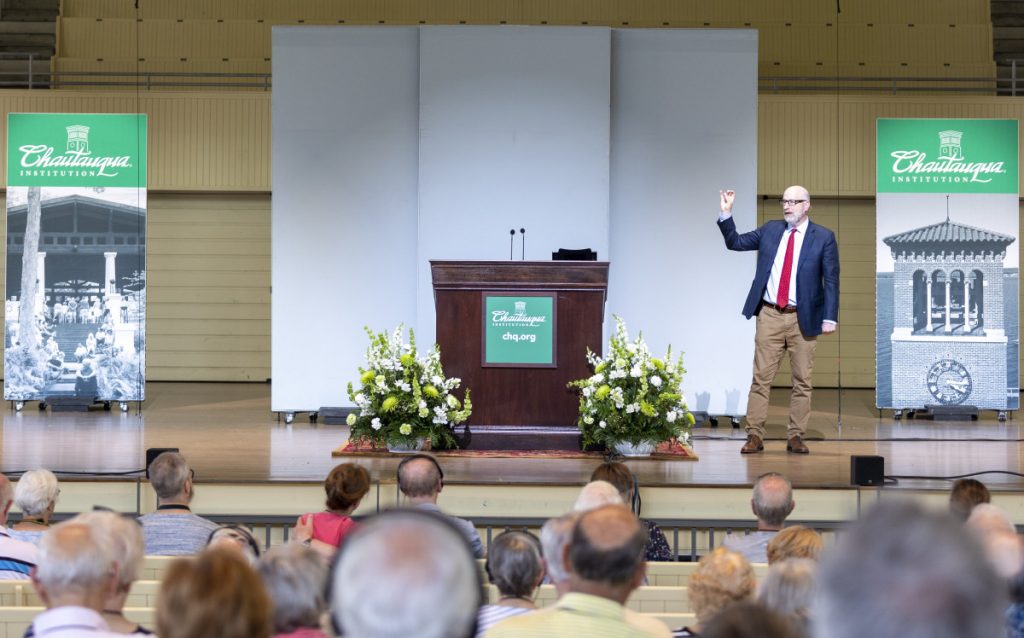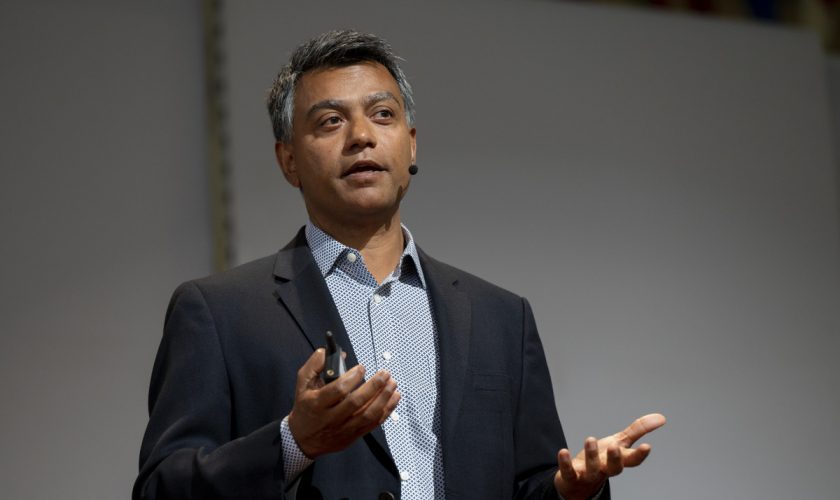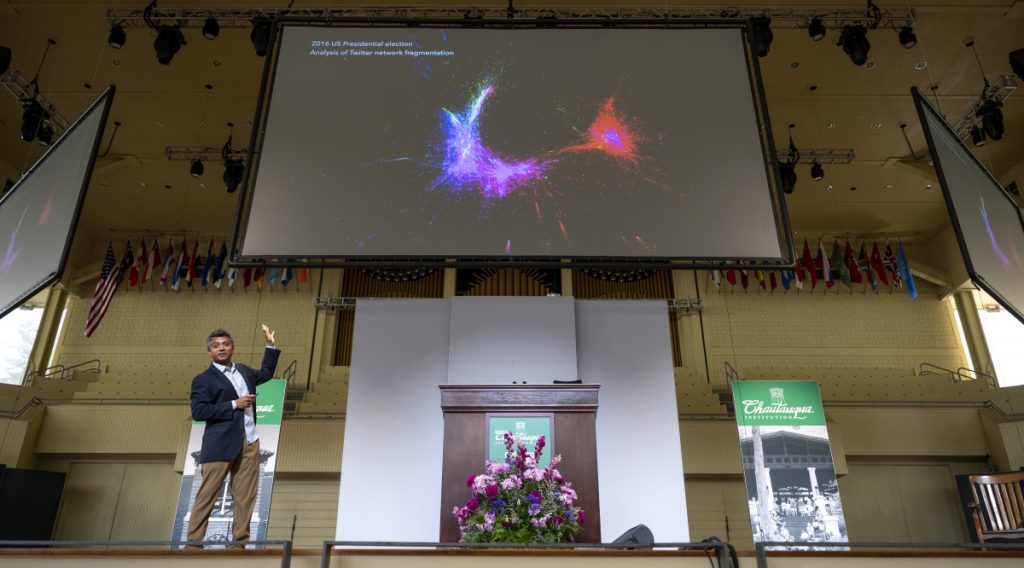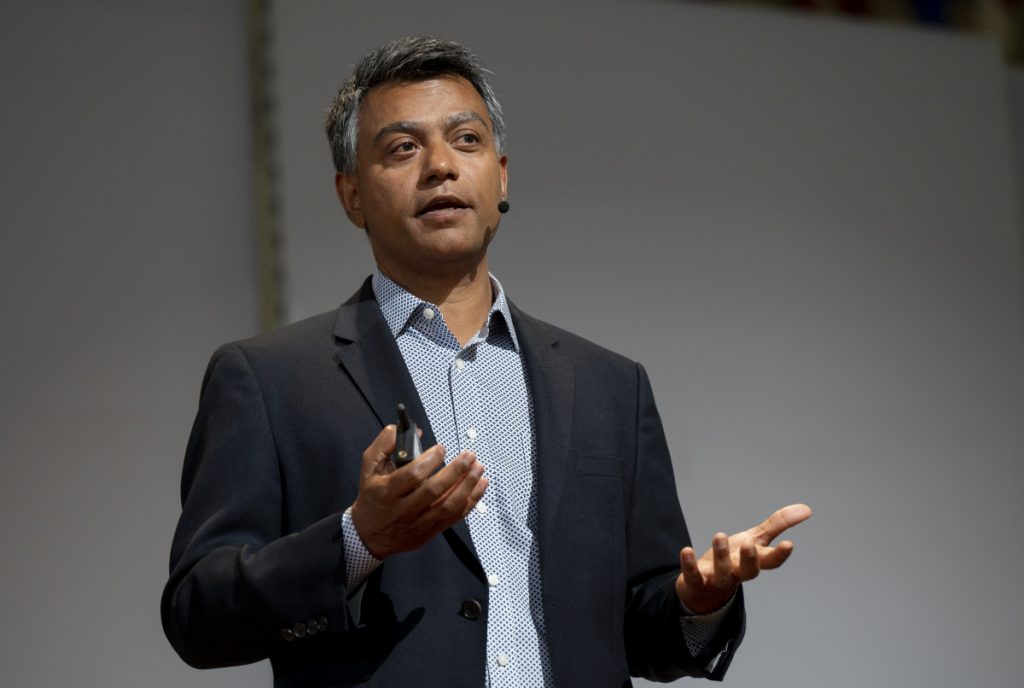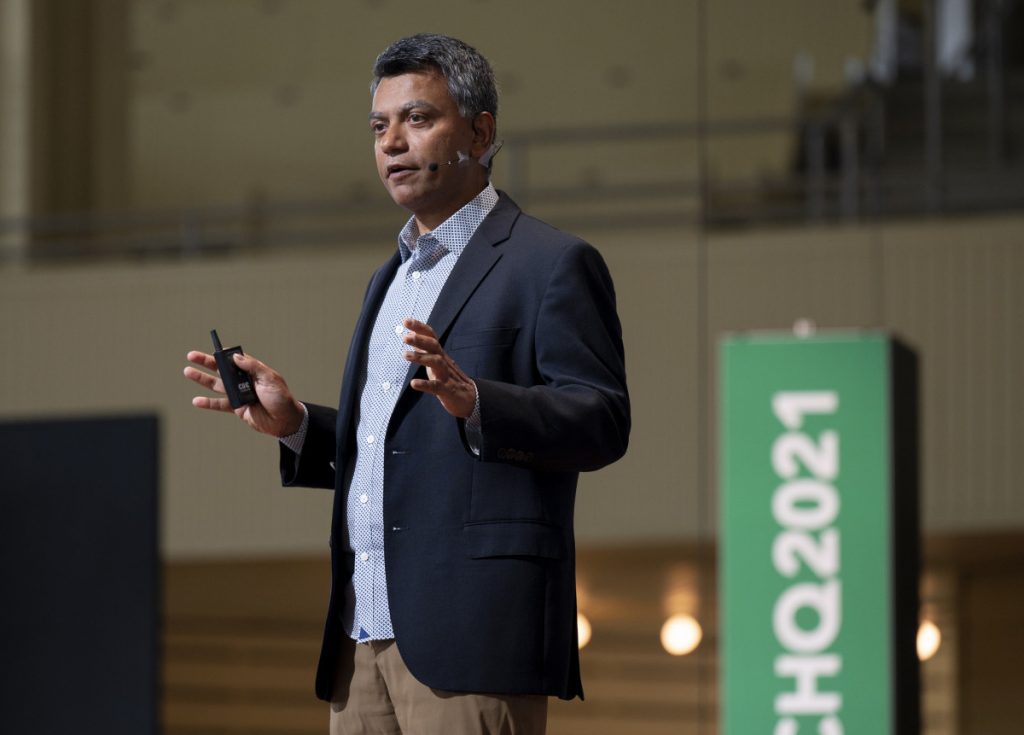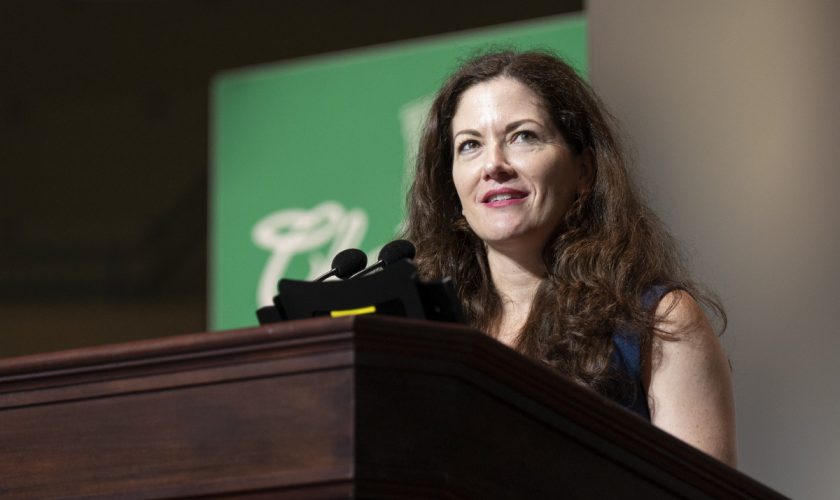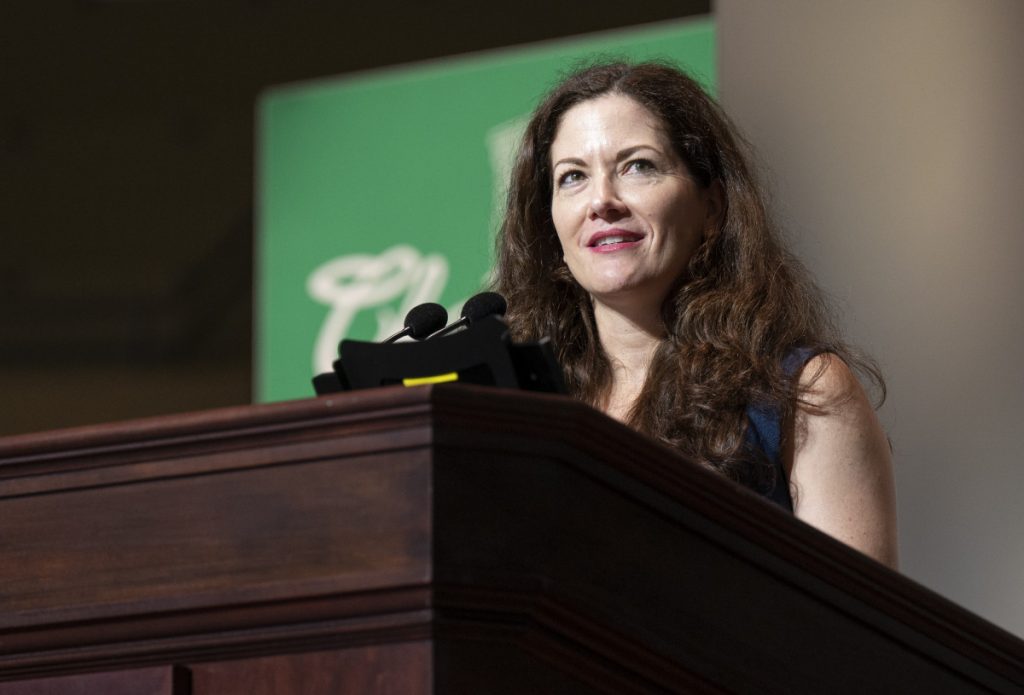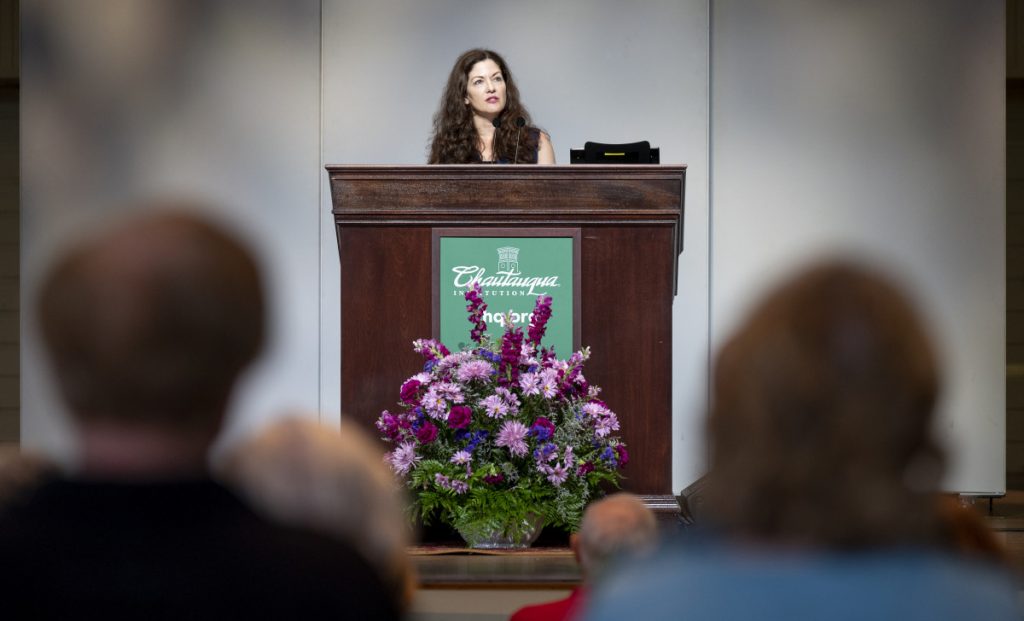NICK DANLAG – STAFF WRITER
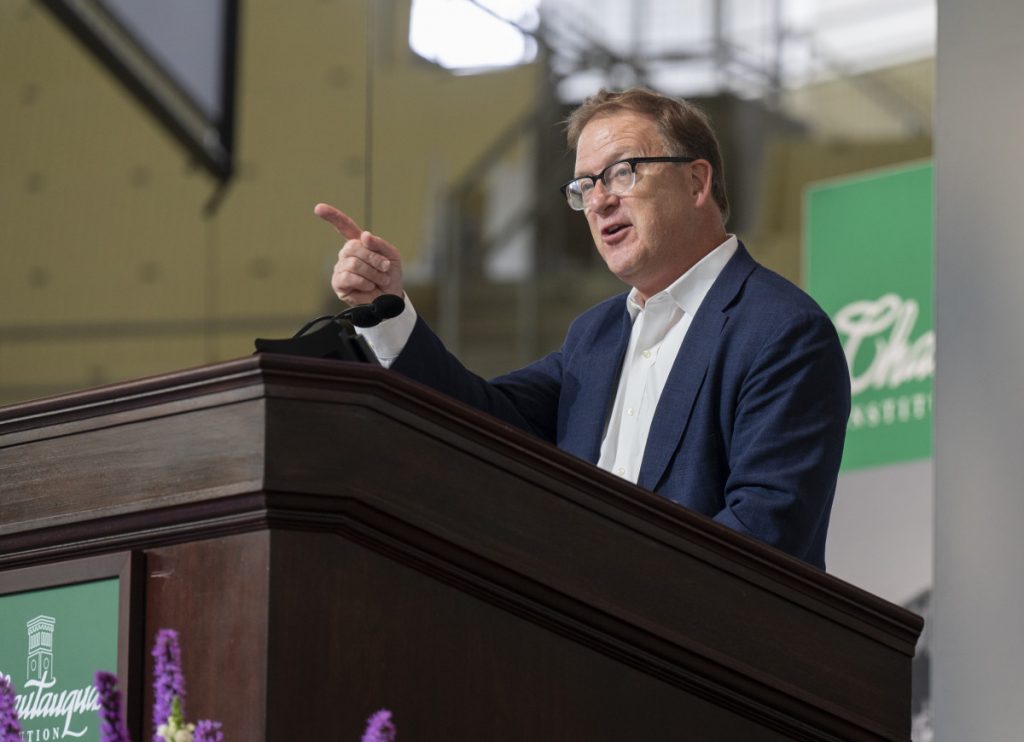
The tale of government action against poverty is almost always told in a pessimistic tone. President Ronald Reagan once famously said, “The federal government declared war on poverty, and poverty won.” In March, Sen. Bernie Sanders said, “Poverty in America has become a death sentence.”
Both are wrong, according to Robert Doar, Morgridge Scholar and president of American Enterprise Institute, a public policy think tank.
“In fact, accurate, more complete, data on the real condition of American households reveals more optimism about our safety net than pessimism,” Doar said. “Since the 1990s our country has made remarkable, yet often overlooked, strides, to improve the lives of millions of low-income Americans.”
Poverty has been defined, since the 1960s, as a family of three earning less than $21,000 a year and a family of four earning less than $25,700 a year. He said politicians and the media often use statistics that do not take into consideration government aid. When aid is considered, he said, the picture painted is very different.
When taking this into consideration, Doar said child poverty has decreased from 16% to 4% in the last 30 years, and Americans in the bottom 20% of income have experienced a 91% cumulative growth in their incomes.
“Our war on poverty is largely over, and a success,” Doar said. “Now, this might seem like an overstatement, but it really isn’t. In terms of the goal we set for ourselves, historically and consistently, to get the poorest Americans above a certain standard of material well-being, we’ve clearly succeeded.”
Poverty, however, is not the end of the story, he said. Americans in the lower middle class need more, and different, support that promotes greater skills, higher wages, more jobs and faster economic growth.
“Families just above the poverty line face difficult challenges. They are not safely in the middle class,” Doar said. “Public policy ought to be focused on helping them move up. But public policy also needs to recognize that the challenge we face now is not to end poverty — we did that — but to help people move up.”
Doar joined AEI in 2014, after serving in leadership positions for more than 20 years in the social service programs of New York and New York City under Gov. George Pataki and Mayor Michael Bloomberg. At 10:30 a.m. on Tuesday, Aug. 10 in the Amphitheater, Doar presented his lecture, “Poverty in America Before and After COVID-19,” as part of Week Seven’s theme of “The State of The Economy: Where Do We Go From Here?”
He discussed how social programs need to require and reward work, how effective American aid has been for low-income citizens, and how politicians should be hesitant to keep COVID-19 financial relief measures into the future.
Doar has thought for a long time that experts are misleading the public about poverty in the country.
“Experts were purposely pessimistic about our successes, even when they knew the truth. They were afraid to say too much because they worry that the good news will make further spending harder for them to justify,” Doar said. “Now, that may be an understandable political strategy, but it’s also dishonest — and, I think, unhelpful to those who we really want to help, because the pessimistic rhetoric focuses our attention on the wrong problem.”
He said the key to the success of the movement against poverty has been a bipartisan understanding that the best way to help the most vulnerable is to give government aid and to encourage people to work. One example of this bipartisanship was when President Bill Clinton and Speaker of the House Newt Gingrich worked together in 1996 on reforms that established an expectation of work for cash-assistance recipients, as well as other efforts.
“Since then, these supports have been greatly expanded. This combination of requiring and rewarding work is what produced the precipitous decline in poverty for everyone, and for children,” Doar said. “We have learned that it takes work and support to lift a family out of poverty.”
The benefits of these measures are not limited to income. They include better health, stronger communities, greater social standing, less substance abuse and more parental support.
And family is a large factor in a person’s likelihood of coming out of poverty. Doar said children in single-parent households have a higher likelihood of not finishing high school, and higher instances of teen pregnancy and incarceration.
“It is vital that we speak honestly about these challenges, with young people especially, and dedicate ourselves to alleviating the challenges of single parenthood by encouraging greater participation and support from the nonresident parent,” Doar said.
Over the past 30 years, rates of teen pregnancy have decreased in large numbers, from 100 in 10,000 to 16 in 10,000.
The economy is another large factor in poverty.
“As anybody who works in social services will tell you,” Doar said, “it’s much easier to help struggling families when the economy is strong.”
In 2008, the financial crisis made it much harder for struggling families to move up the financial ladder. But from 2017 to 2019, the U.S. saw the lowest rates of poverty ever, he said, “no matter how you measure it.”
Then the pandemic came. With the large absence of jobs, the government had to give out aid, such as the Paycheck Protection Program, enhanced unemployment benefits and direct stimulus payments. These efforts kept millions out of poverty.
“I am certain, and any academic would be certain, that when we look back at income, savings and consumption data for Americans during the pandemic,” Doar said, “we will find, for those at the bottom, their resources increased significantly, and did not decline, as you would expect.”
Doar said while the costs were necessary for the short term, these measures can become problematic in the long term.
“I hope the system will return to the way it was before the crisis,” Doar said. “We do not need enormous benefits flowing to nonworking, able-bodied adults in a world in which jobs are available.”
The Biden Administration and other high-ranking Democrats, Doar said, are interested in making many of these aid programs permanent. He said these programs take the emphasis off of work, which has been a proven part of raising people out of poverty.
“Our success in responding to the COVID crisis,” Doar said, “may lead us to forget the lessons we learned prior to it, and undermine our focus on work, leading, I’m afraid, in the long term, to less employment, and as a result, more family dysfunction, and higher poverty rates.”
As part of the Q-and-A session, Amit Taneja, senior vice president and chief Inclusion, Diversity, Equity and Accessibility (IDEA) officer, asked Doar to talk about inequality in regards to poverty.
In his work with poverty, Doar doesn’t focus on inequality. One reason Doar thinks a focus on inequality is counterproductive is that the people he served in state and local government did not focus on it.
“When I would see people coming in seeking assistance, their focus was not on the difference between them and me or the difference between them and wealthy people,” Doar said. “Their focus was on getting ahead, getting a start. They respected achievement. They honored people that had been very successful. They weren’t really interested in the inequality discussion; they just wanted to start.”
Another reason, he said, is “efforts to address inequality risk harming the economic growth that produces opportunities for low-income Americans.”
“I don’t want to dismiss it completely, because there are aspects of our current condition that are troubling,” Doar said. “But I think it’s a distraction from what we really need to focus on. I’ve said we’ve been successful in poverty alleviation, raising people’s material well-being. What we’re not doing well is helping people move to the next step, building the skills they need so that their incomes can rise, and they can become safely middle class.”

